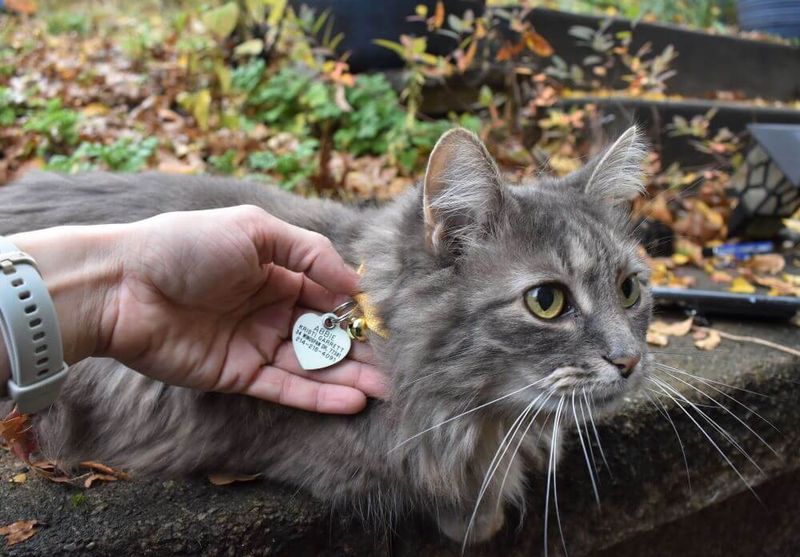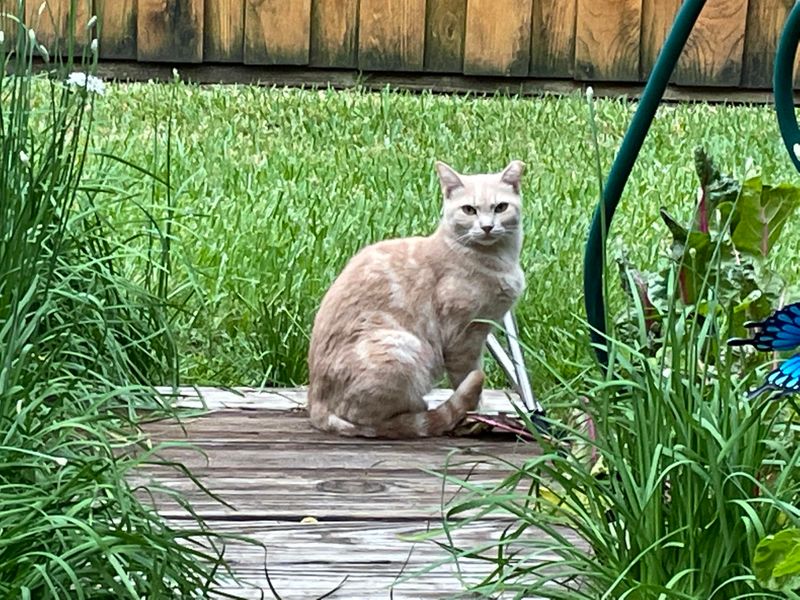📖 Table of Content:
- 1. Observe from a Distance
- 2. Check for a Collar or ID Tag
- 3. Offer Food and Water
- 4. Snap a Clear Photo
- 5. Decide If You’re Ready to Foster or Rehome
- 1. Don’t Just Bring It Inside Immediately
- 2. Don’t Assume It’s Feral Without Checking
- 3. Don’t Feed It Milk
- 4. Don’t Post Its Pic With “Free to Good Home” Right Away
- 5. Don’t Try to Bathe It Unless You Want Scars
There you were, just minding your business—maybe grabbing the mail, watering a plant, or scrolling through your phone—when suddenly poof, a mysterious cat appears on your porch like a fuzzy little enigma. Is it lost? Is it hungry? Is it planning a full-scale invasion of your living room? One thing’s for sure: this unexpected feline guest has instantly become your problem… and possibly your new best friend.
Before you start designing a name tag and knitting tiny sweaters, let’s take a breath. While cats have an uncanny ability to wander into our lives (and hearts) without warning, there are a few important things to do before letting them waltz into your kitchen. From checking if they’re someone’s missing pet to making sure they’re healthy and safe, a few smart moves early on can save you—and the cat—a lot of confusion later.
In this guide, we’re breaking it down into a simple game plan: 10 things to do when a stray (or possibly very entitled) cat shows up out of nowhere, plus 5 common mistakes to avoid at all costs. Whether you’re a seasoned cat whisperer or a total feline rookie, this is your cheat sheet for turning an “um… hello?” moment into a thoughtful, cat-friendly response.
1. Observe from a Distance
Surprises can be charming—but also a little unpredictable when they have claws. Take a quiet moment to watch the cat’s behavior from afar. Is it pacing nervously, meowing for help, or lounging like it owns your porch? Body language will tell you a lot about whether it’s lost, feral, or just out for a stroll. Giving it space builds trust and keeps both of you safe. Plus, you’ll look way cooler if you’re not flailing around with a treat in hand. Remember: in the world of cats, calm equals credibility.
2. Check for a Collar or ID Tag
Collars are like little feline business cards. If you can get close without scaring the cat, gently check for an ID tag. You might discover its name is something hilarious like “Sir Pounce-a-Lot” and it lives two houses down. This simple step could reunite a family before you even have time to Google “how to adopt a cat.” If there’s a phone number, give it a ring—you could be a hero in under five minutes. Be gentle, move slowly, and avoid sudden grabs. Cats like manners (and not being tackled).
3. Offer Food and Water
Nothing says “I come in peace” like snacks. A dish of plain tuna, some kibble, or even just fresh water can open the door to friendship. Keep the offerings a few feet away at first—cats like to pretend they’re not interested until you look away. Avoid milk (more on that later), and skip anything too salty or spicy. If it eats, that’s a major win: you’re officially on its “not scary” list. This is your trust-building moment—treat it like a tiny, fuzzy negotiation. Bonus: you’ll get to watch them do that polite little paw dip thing.
4. Snap a Clear Photo
A picture is worth a thousand “is this your cat?” posts. Whip out your phone and take a clear, close (but not too close!) photo of your feline visitor. Make sure its face, markings, and general vibe are visible—no blurry action shots of it bolting under your car. Then share it in your local community groups, pet finder apps, and neighborhood boards. The goal is to help someone recognize their long-lost kitty ASAP. And yes, it’s totally okay to caption it something like “This elegant creature showed up. I think it pays taxes.” A little humor goes a long way online.
5. Decide If You’re Ready to Foster or Rehome
This is the big one. If no one claims the cat and it clearly wants to stay, you’ve got a decision to make. Can you care for it, at least temporarily? If not, reach out to local rescue groups for support—they can help with vet visits, fostering, or finding a new home. If yes… congratulations, you’re now a cat staff member. You’ll be paid in purrs, occasional ankle attacks, and the eternal satisfaction of doing something good. Just remember: it started with a random porch sit, and look at you now.
1. Don’t Just Bring It Inside Immediately
Impulse is understandable (look at that face!), but caution is key. The cat might have fleas, parasites, or hidden injuries. It could also freak out in a new environment and bolt under your couch for three days. Quarantine is the name of the game here—ideally in a bathroom or spare room if you do decide to bring it in later. If you have other pets, definitely don’t mix them right away. Start with slow intros and a vet check. You’re not being cold—you’re being a responsible cat concierge.
2. Don’t Assume It’s Feral Without Checking
Just because it’s cautious doesn’t mean it’s wild. Many friendly house cats act shy or skittish when lost. Assuming it’s feral might prevent you from trying to help—or even scare you off altogether. Give it a chance to show you who it is, over time and snacks. Even scaredy-cats deserve the benefit of the doubt. Think of it like dating: first impressions can be weird, but that doesn’t mean it’s not a love match. Approach with curiosity, not assumptions.
3. Don’t Feed It Milk
It’s classic cartoon logic, but real cats say “no thanks” to dairy. Most adult cats are lactose intolerant, which can lead to upset stomachs (for them) and terrible cleanup (for you). Stick with water or proper cat food—bonus points for wet food with limited ingredients. It may not look as cute as a saucer of milk, but your carpet will thank you. Also, it sets the tone: you’re a responsible snack-giver, not a cereal ad. Nutrition is the first step toward trust.
4. Don’t Post Its Pic With “Free to Good Home” Right Away
The internet is a powerful place—use it wisely. Before rehoming, give lost-and-found channels a chance. That cat might belong to a tearful kid two streets away. Posting “free to a good home” can invite the wrong kind of attention and puts the cat at risk. Always exhaust local search efforts first. Rehoming should be a last resort, not your first post.
5. Don’t Try to Bathe It Unless You Want Scars
We cannot stress this enough: do not bathe the cat unless absolutely necessary. Not only will the cat protest with all 18 claws, it’ll remember. Forever. Most cats do a great job grooming themselves—if they’re dirty, it’s likely due to stress or illness, not laziness. Let a vet or groomer assess if a bath is even needed. Your wrists, towels, and dignity will be safer for it. Bathing is not bonding. It’s betrayal (in their eyes).










